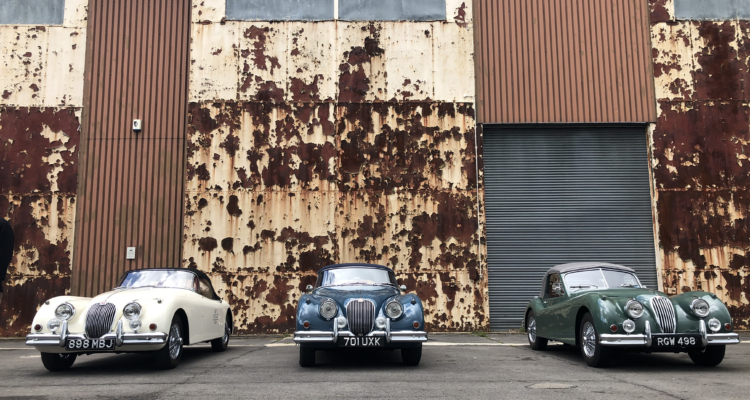The Homologators – Audi Quattro

How we’ve managed to feature twelve rather special cars so far in this series up until now without including the Audi Quattro is a mystery to us. Perhaps we thought it was too obvious to mention early doors, or maybe we wanted to keep this particular trump card under wraps to increase its impact? To be fair, we did feature it in our five-cylinder engines article and our Editor Chris Pollitt wrote a rather lovely piece celebrating its 40th birthday, so it has had coverage. Whatever the case, however, it’s here now, in all its Group B glory.
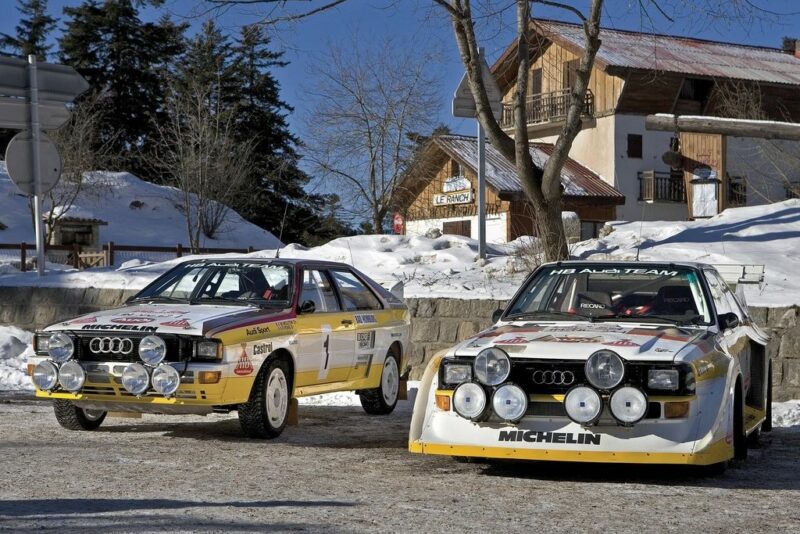
Surely by this point in time everyone knows about the Audi Quattro and its notoriety within the rally world. It was a car that literally changed the sport. Nobody had even considered making a four wheel-drive rally car until Audi stepped up and asked “why the hell not?”. After all, rally rules at the time didn’t stipulate it couldn’t be utilised, in fact, they never even mentioned it because back then it was thought to be the reserve of off-road vehicles and farm machinery. All that changed, however, when the German engineers at Audi took a prototype 80 and installed a driveshaft to each corner, open centre and rear differentials that could be manually locked and a permanently open front differential.
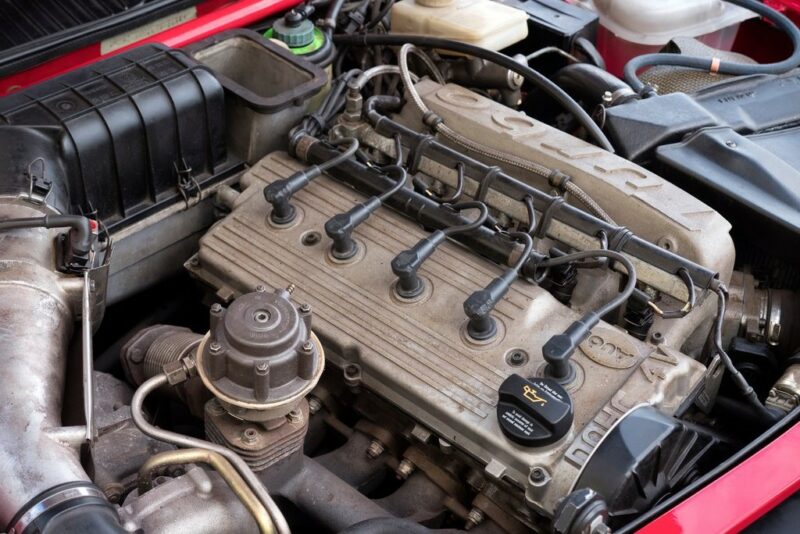
This wasn’t a case of shoe-horning all of that drivetrain jiggery-pokery into a car and hoping for the best, though. Far from it. There was science involved, and maths and complex engineering principles and testing and everything else that is necessary to make something like this applicable and successful in both the real world and on the rally stages. The result of it all was a car that handled like nothing else on the road. The Quattro – so named for its all wheel-drive system – became the genesis of a movement that is now commonplace within the automotive industry.
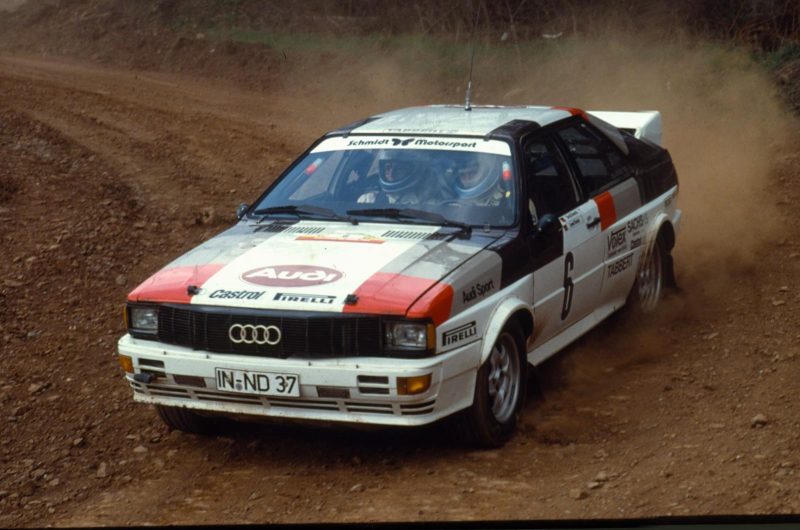
So, Audi had successfully brought its Quattro system to fruition but what came first? The road-going chicken or the rallying egg? Well, the Quattro story goes back as far as 1977 when Audi’s chassis engineer Jörg Bensinger noticed that Volkswagen’s all wheel-drive military vehicles out-performed pretty much everything else in the snow and a lightbulb promptly illuminated in his brain. Bensinger and his team, along with German Rally Champion Harald Demuth, continued development of the Quattro and the rally version made its debut in 1980 at the Jänner Rallye in Austria.
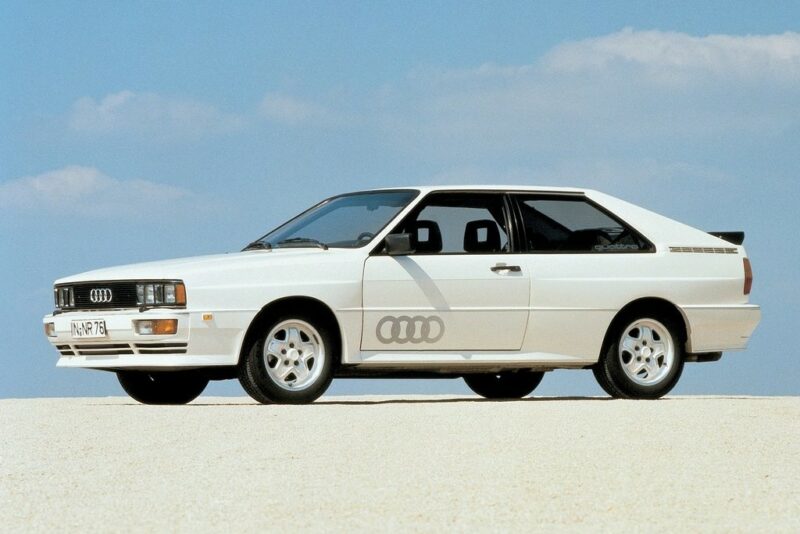
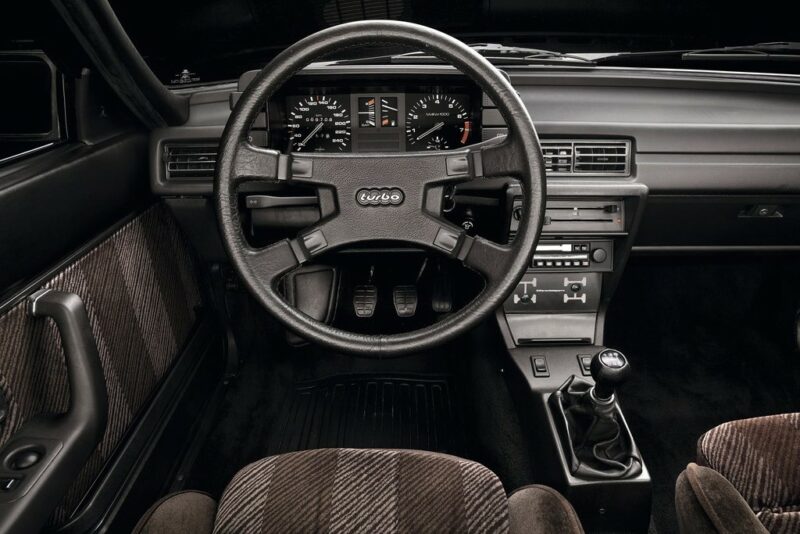
The road-going version, with its five-cylinder, turbo-charged engine, was also unveiled that same year at the Geneva Motor Show to stunned crowds. This boxy (the body was designed by Brit Martin Smith), 200bhp technological marvel, known subsequently as the Ur Quattro, was an instant hit thanks to the winning combination of forced induction and all wheel-drive, which meant a 0-60 dash of just over six seconds. Don’t forget, this was 1980 when the Ferraris and Porsches of the time – the likes of the 308 and 928 respectively – were packing more horsepower but posting slightly more lackadaisical 0-60 times than the Audi. It was quite the car.
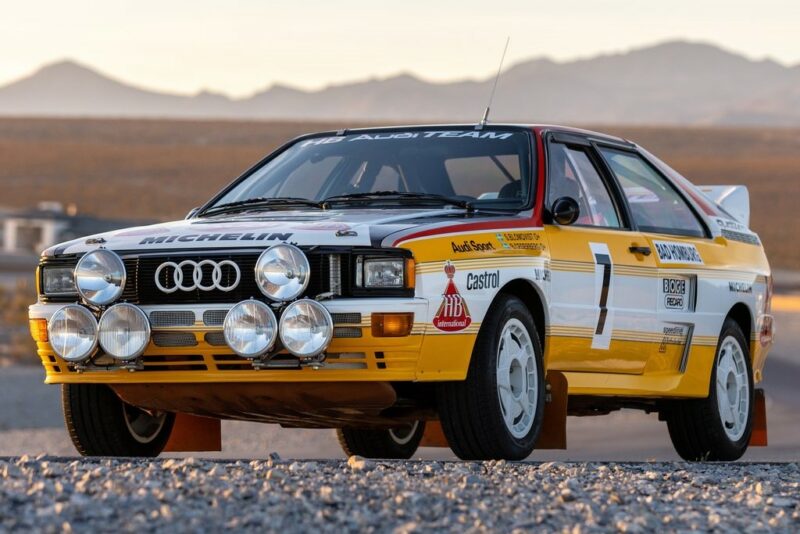
The Quattro road car remained fairly standard over its eleven year production run with only increases in the engine’s displacement and number of valves per cylinder worthy of note. The rally car, on the other hand, received a number of significant updates. Originally homologated in Group 4 rallying and with wins by Michèle Mouton and Hannu Mikkola already under its belt the Quattro would make the seamless transition to Group B when those rules were introduced in ’82. A year later Audi re-homologated the Quattro in A1 and A2 guises with the A representing an all new aluminium version of the now famous five-cylinder engine.
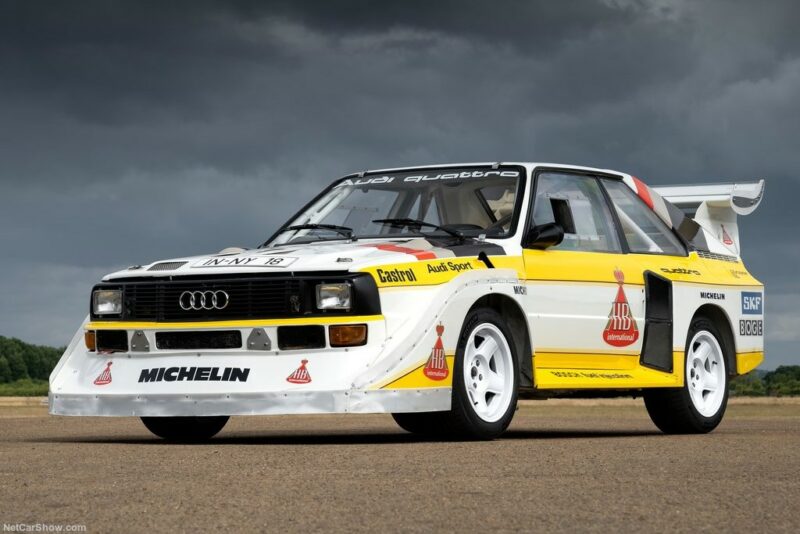
It wasn’t until 1984 though that things started to get real, as they say, for Audi and the Quattro as rival Peugeot, with its nimbler, purpose built 205 T16, was beginning to dominate Group B. The larger, front-heavy Audi had lost the edge that its overwhelming power had provided and top brass recognised it was time for a change. It didn’t want to develop a brand new car, however, for fear of diminishing the well-earned reputation of the A2 model, instead opting to slice and dice the existing Quattro in a bid to improve the handling and make the car more competitive. The result of which was the Audi Sport Quattro S1, a further refinement that again would be homologated with just over 200 road-going variants being produced. With an increase in power to over 300bhp thanks to a larger intercooler and turbo, along with much of the original Quattro’s handling characteristics, these cars remain highly sought-after.
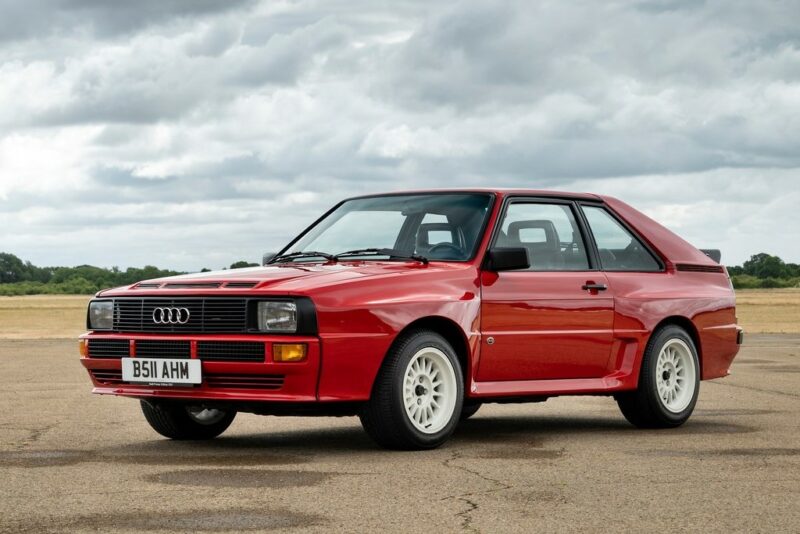
To try and reduce the understeer that had plagued the A1 and A2 cars, Audi shortened the wheelbase and shed weight and while this did improve the car’s turn in it also unsettled the rear end which, when driven properly, would counteract any understeer. What we mean by “driven properly”, however, is at the absolute limit. Drivers had to wring the S1’s neck to within an inch of its life to get the best out of it which is partly why any Group B footage of the car is so impressive to watch. Not only that but the all-aluminium, 450bhp, 20-valve engine needed to be thrashed to keep the revs, and therefore the power, in the sweet spot, adding to the car’s already notoriously difficult and twitchy nature.
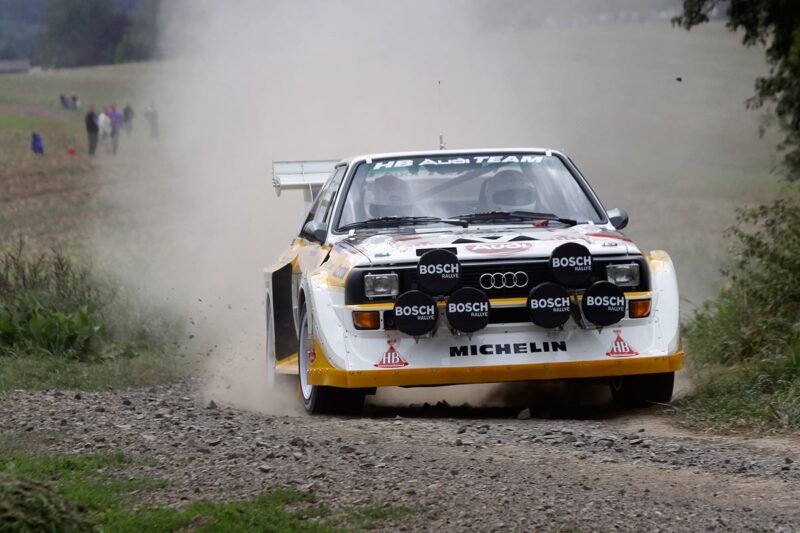
Audi’s final Group B iteration of the Quattro came in the form of the S1 E2. Introduced at the tail end of 1985 this winged behemoth came to be the poster child for many fans of the sport and will forever be remembered as peak rallying. With well over 500bhp allowing for a 0-60 dash of three seconds, Audi was achieving in the mid-eighties what supercars are doing today. An incredible achievement that highlighted the company’s desire to push boundaries and create the ultimate rally weapon. Not only did the myriad aerodynamic accoutrements actually work, Audi also shifted as much of the mechanicals to the back of the car as possible, leading to an almost 50:50 weight distribution. Combined with the insane power of the five-cylinder turbo the S1 E2 was instantly catapulted into legendary status despite only seeing a handful of actual rallies. A testament to the car’s reputation.
Not only was the Quattro a shining star of the rally world but it also dominated the fearsome Pikes Peak hill climb, winning the event six years in a row beginning in 1982 and culminating in Walther Rohl’s record breaking run in ’87. The Sport Quattro in question was Audi’s crown jewel – the car it could build without any pesky rally regulations. A car with 750 horsepower and more wings than an RAF pilots convention. The car went out on top – a fitting cherry on the Quattro cake and sure-fire proof of the car’s full potential.
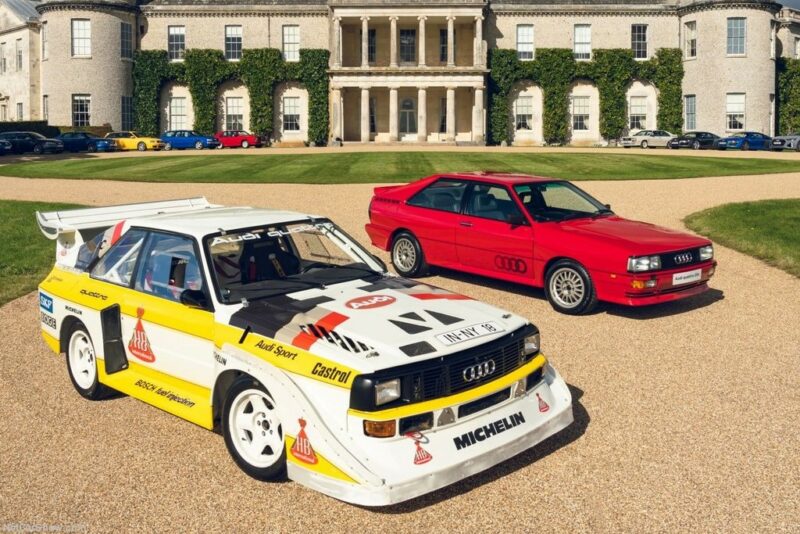
During its rally tenure the Quattro was perceived as different from the purpose-built competition cars that Peugeot and Lancia had begun to produce, however; the aforementioned 205 T16, and the Italian Delta S4. These cars were specifically built from the ground up to win rallies. The Quattro, on the other hand, was arguably a truer homologation special, based as it was, on a road car. Audi perhaps pushed the Quattro further than it had any right to but it just goes to show how capable that platform was and the Quattro remains not only one of the most impressive and memorable cars to ever grace a rally stage but also one of the most important cars ever produced, in either competition or road-going form. The motorsport, nay, the motoring landscape as a whole would be vastly different without it.

